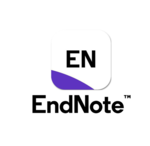Perbandingan Tingkat Penerimaan Pasien Anak Penggunaan Chloride Ethyl Dan Benzocaine Gel Dalam Pencabutan Gigi Susu Berdasarkan Facial Image Scale
Abstract
BACKGROUND: Tooth extraction needs to be done to prevent tooth eruption from growing in an incorrect place. If this is left unchecked it will cause malocclusion (tooth structure that is not good and right) which results in the emergence of caries, tartar, bad breath to joint disorders TMJ (Pratiwi, 2009). Before performing tooth extraction, anesthesia needs to be done first. When extraction is generally given local anesthesia, in certain circumstances general anesthesia is performed by an anesthetist. Various types of topical anesthetic ingredients according to the ingredients of the medicine are chloride ethyl, Xylestesin ointment, Xylocain Ointment, Xylocain Spray, and benzocaine (liquid, gel, spray). The level of child acceptance of the dental extraction anesthesia procedure can be measured by the "face image scale" indicator in the form of facial hedonic scale. OBJECTIVE: to determine the level of acceptance of pediatric patients for the use of ethyl cholride and benzocaine gel anesthesia in milk tooth extraction anesthesia based on facial image scale. METHODS: This research is a type of experimental research with observation and descriptive design to describe the level of acceptance of pediatric patients for the use of ethyl cholride and benzocaine gel in the procedure for anesthesia of tooth extraction based on facial image scale. The instrument in this study is a research instrument to measure the level of patient acceptance is the Facial Image Scale in the form of facial hedonic scale consisting of 5 categories of levels of admission of children to topical anesthetic in the form of chloride ethyl and benzocaine gel. A sample of 60 children was grouped into 2 groups, namely the group of patients who would be extracted from their teeth using 30 chloride ethyl anesthetics and a group of patients who would have their teeth extracted using benzocaine gel anesthetic as many as 30 patients. RESEARCH RESULTS: As many as 53.3% of children were rather dislike a little chlorethyl anesthesia when their milk teeth were removed and as much as 66.67% of children rather like (like a little) benzocain gel anesthesia when extracting their milk teeth. CONCLUSION: Benzocain gel is preferred by pediatric patients in the extraction of milk teeth. SUGGESTION: If you are going to use chloride ethyl anesthesia in tooth extraction, it should be accompanied by the implementation of good therapeutic communication so that the patient is not surprised when anesthetized, so there is no rejection of tooth extraction. Even if using benzocaine gel anesthesia, even though benzocain gel is more acceptable than chloride ethyl, it should still be accompanied by good therapeutic communication, to avoid rejection of tooth extraction. For pediatric patients with a high level of anxiety should be avoided the use of chloride ethyl anesthesia to extract milk teeth so that the child is not surprised and afraid or refuse to take his teeth, and recommended to use benzocain gel anesthesia for extraction of milk teeth. Keywords: milk tooth extraction, facial image scale, chloride ethyl, benocaine gelDownloads
Download data is not yet available.
Published
2018-05-01
How to Cite
Krisyudhanti, E. (2018). Perbandingan Tingkat Penerimaan Pasien Anak Penggunaan Chloride Ethyl Dan Benzocaine Gel Dalam Pencabutan Gigi Susu Berdasarkan Facial Image Scale. Quality : Jurnal Kesehatan, 12(1), 43–48. Retrieved from https://ejournal.poltekkesjakarta1.ac.id/index.php/adm/article/view/29
Issue
Section
Artikel
Copyright & Licensing











